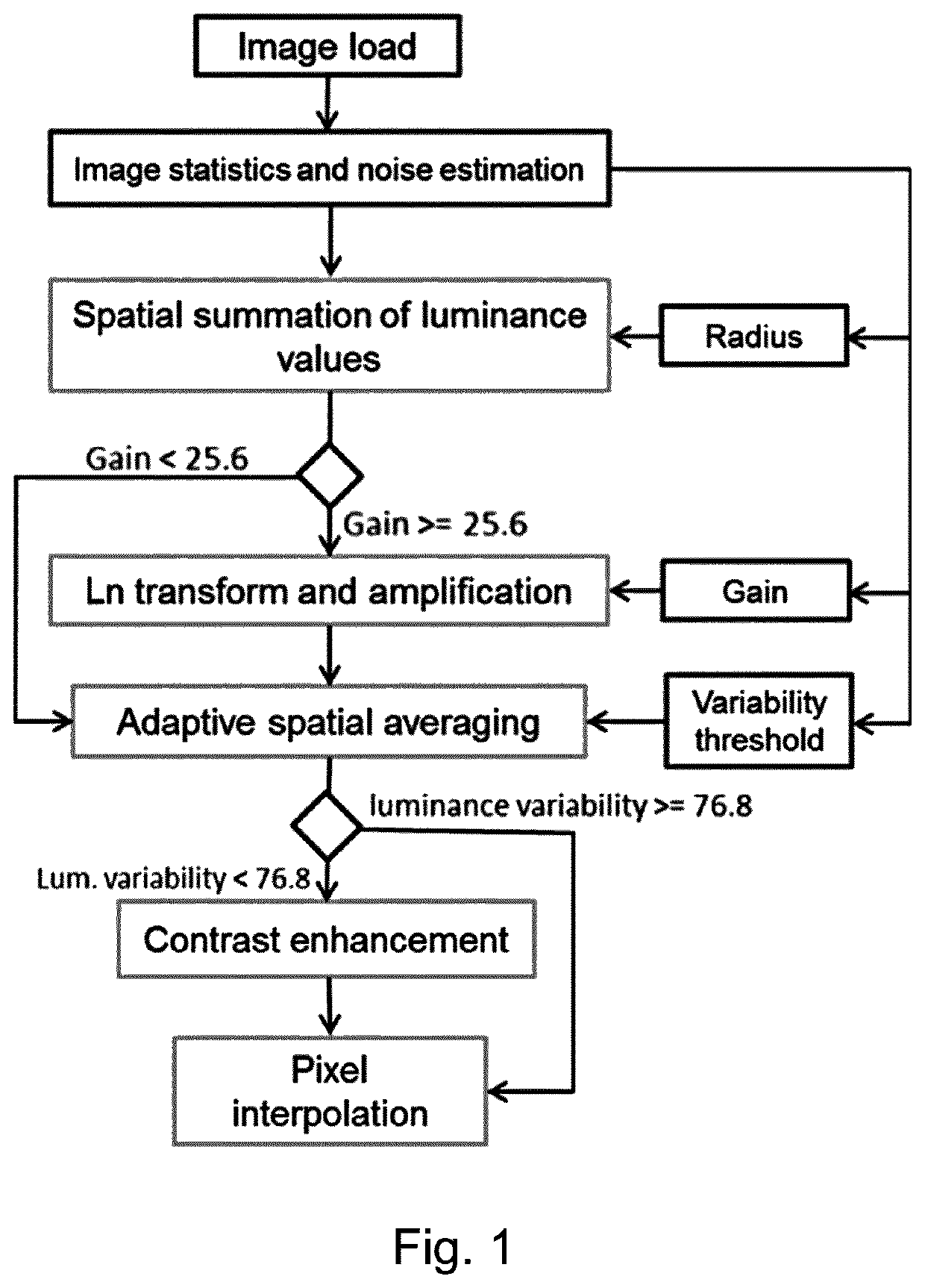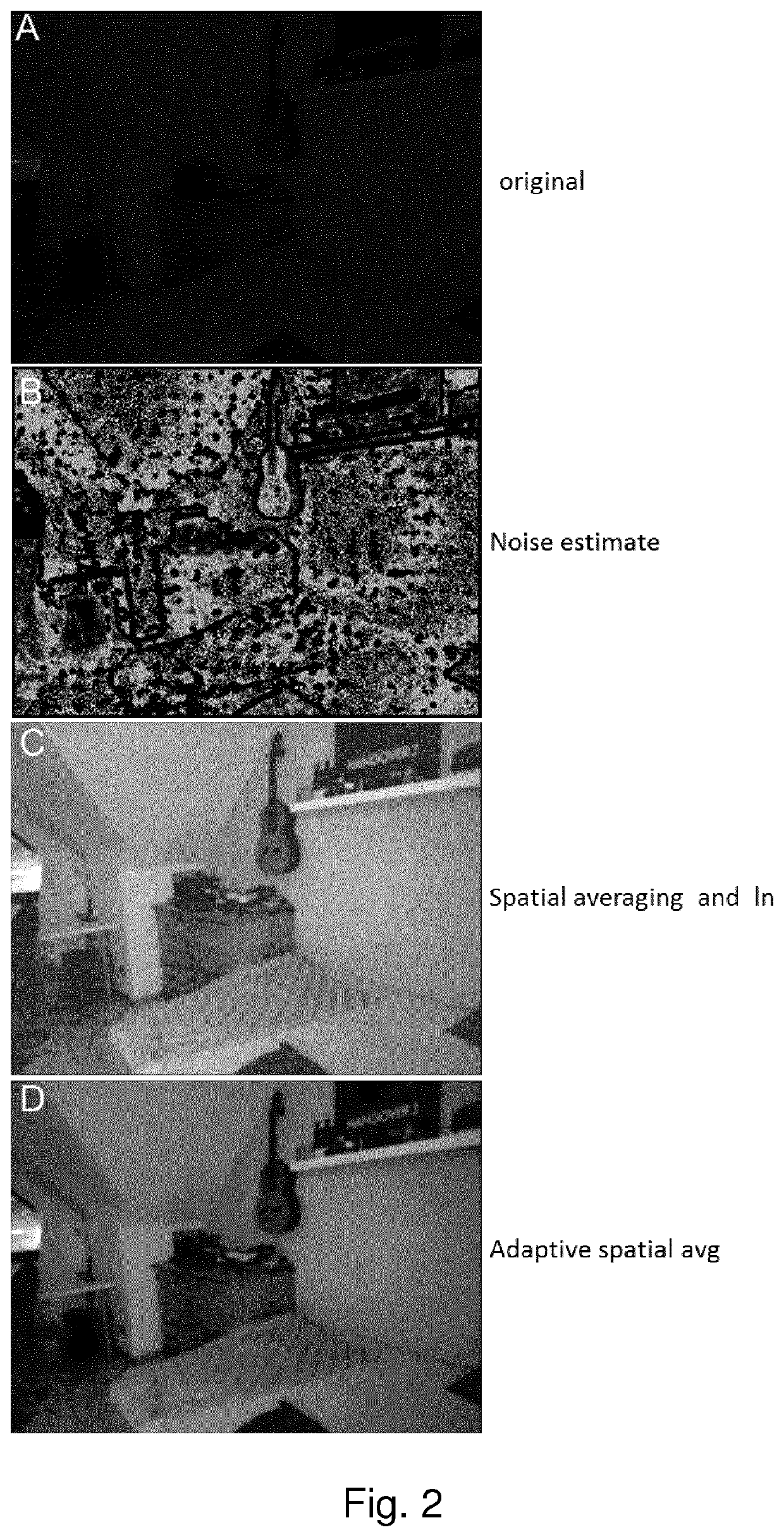Method and device for image processing
a grey scale image and image processing technology, applied in image data processing, instruments, computing, etc., can solve the problems of reducing image quality, denoising images, amplification of noise, etc., to achieve significant image enhancement, enhance grey scale images, enhance image quality
- Summary
- Abstract
- Description
- Claims
- Application Information
AI Technical Summary
Benefits of technology
Problems solved by technology
Method used
Image
Examples
Embodiment Construction
[0053]FIG. 1 shows a schematic overview of an exemplary embodiment of the method according to the invention. Global image statistics and a simple method of noise estimate were used to derive parameters. These were used in subsequent image-processing steps to enhance the quality of dim images and remove noise. Images with average brightness skip “Ln transformation”, and the “Contrast enhancement” routine was only applied to images that exhibited low variance among their luminance values.
[0054]This method increases the grey value saturation and image contrast of underexposed grey-scale images as well as grey-scale frames of a movie by combining several different image processing steps (see FIG. 1). In the first step, a simple form of noise estimation is performed, and global image statistics are evaluated to calculate three parameters of this algorithm (the radius, gain, and variability threshold). Then luminance values (grey values) of pixels are computed at the level of so-called re...
PUM
 Login to View More
Login to View More Abstract
Description
Claims
Application Information
 Login to View More
Login to View More - R&D
- Intellectual Property
- Life Sciences
- Materials
- Tech Scout
- Unparalleled Data Quality
- Higher Quality Content
- 60% Fewer Hallucinations
Browse by: Latest US Patents, China's latest patents, Technical Efficacy Thesaurus, Application Domain, Technology Topic, Popular Technical Reports.
© 2025 PatSnap. All rights reserved.Legal|Privacy policy|Modern Slavery Act Transparency Statement|Sitemap|About US| Contact US: help@patsnap.com



